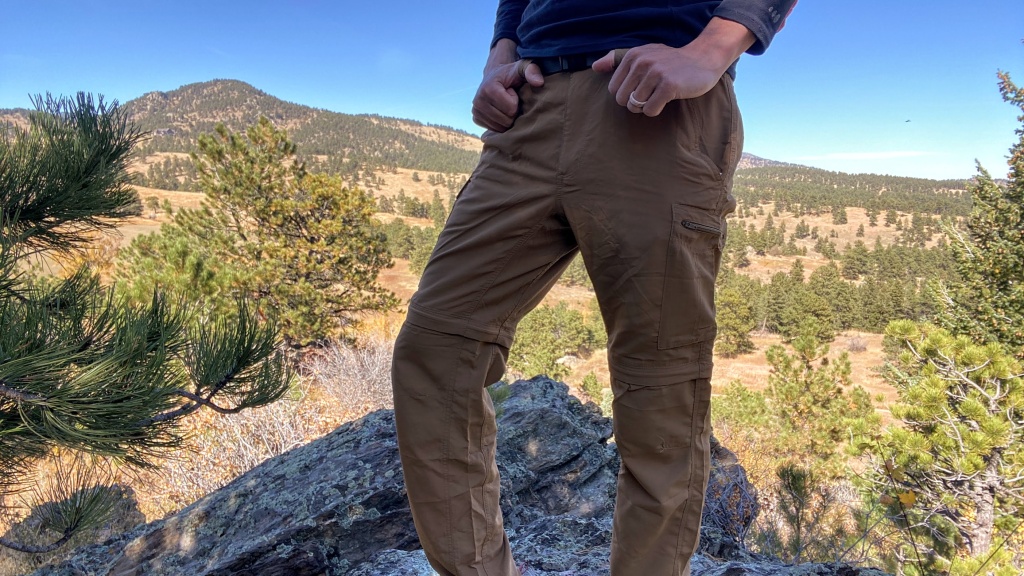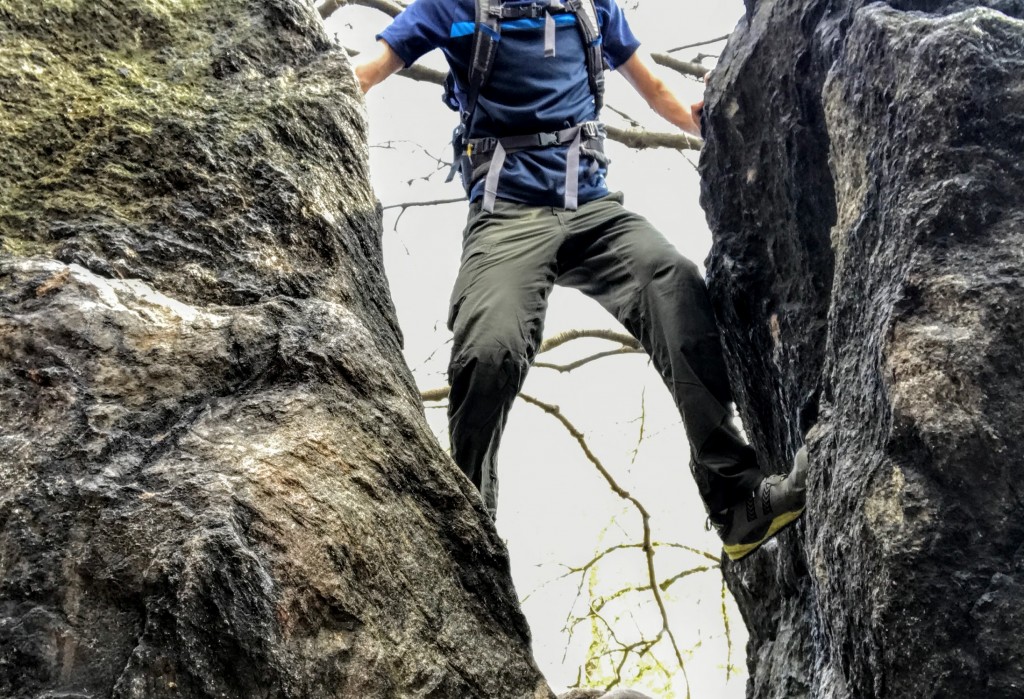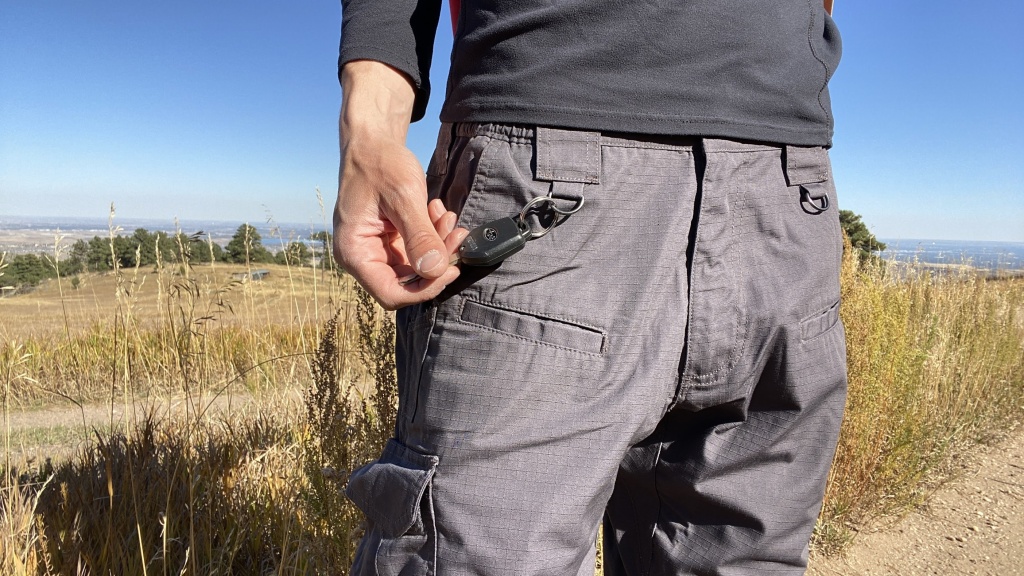As with most gear categories, the basis of this review is a combination of both hands-on wear in the field and controlled tests. We put each pair through its paces in a few different phases. We began with a series of controlled tests and wore each model to get an initial impression of the comfort, fit, and features of each. We then took to the trail to try them out more rigorously on a variety of terrains and in different weather conditions. We've tested these pants in the Colorado Rockies, the Cascades and high desert of central Oregon, the White Mountains of New Hampshire, and the red deserts of southern Utah.
Comfort and Mobility
The majority of the testing for this metric came during our field testing while hiking. We also conducted some side-by-side stretching and running tests to further compare the comfort and mobility of one pant directly to another. Aspects we assessed are the feel of the fabric against the skin at different contact points (e.g., crotch, legs, seat, and waist), as well as the fit (i.e., whether a model is tighter or looser relative to the others).
Venting and Breathability
For this metric, we looked at the number and size of ventilation-specific features (e.g., mesh, fabric density). To further compare, we walked up the same incline for the same amount of time in each pair to see how long it took to cool down, and we noted on each hike how effective the pants were at keeping us cool in the first place.
Weather Resistance
Many of our regular stomping grounds are in dry climates that don't receive much precipitation. However, water resistance is an important aspect of performance. For this reason, we conducted controlled tests to get a better idea of how each pant, and its durable water-repellent (DWR) coating, handles light sprinkles and heavy downpours. We soaked each pant with a spray bottle to get an idea of the DWR effectiveness in light rain, as well as absorption and dry time. We then moved into the shower, where we could easily see how pants would respond to a deluge. We then hung up each wet pair on a hanger and timed how long it took for each pair to dry.
Features
To assess this metric, we identified the various features of each pair of pants — pockets, buttons, zippers, elastic, convertibility, belts, etc. We then put them to the test on our hikes and other adventures, focusing first on the functionality of each feature, and second, on the total number of features included.
Versatility
To test this metric, we wore each pair in a variety of settings such as camping, rock climbing, traveling, around town, and at the office. We also tested each pair of pants while hiking in different weather conditions, such as hot, cold, windy, and wet, and graded models based on how well they were capable of handling all of these different situations while keeping us comfortable and looking good.




